New York's Venus Over Manhattan gallery casts rare works by Alexander Calder in a whole new light

If, like us, you thought you had seen all there is of Alexander Calder, think again. The iconic American artist is the subject of a new exhibition at New York's Venus Over Manhattan gallery that is uniquely staged in the dark.
Organised with the support of the Calder Foundation, 'Calder Shadows' is a seductive new take on Calder's recognisable creations, which still upholds the principles of abstraction and kinetics that he championed throughout his career.
Presented in an austere, dimly lit space, the exhibition sees eleven works, from 1929 to 1974, ingeniously spot-lit so that each accompanying shadow comes fully into view. Delicate mobiles like 'The New Ritou' (1948) and 'Little Black Flower' (1944) – a privately held piece that represents Calder's mature style and has not been exhibited since the 1940s – hang quietly while larger, ominous shadows loom behind. Thin metal wires are transformed into animated line drawings that oscillate and turn with the slightest movement of air, highlighting the kinetic aspect of Calder's work.
The novel display was inspired by archival images of Calder installing his sculptures in darkness and photographing them using directed light. The images caught the eye of the gallery's founder Adam Lindemann, who decided to reorientate Calder's familiar aesthetic. 'I wanted to somehow evoke Calder as I see him,' he explains. 'I wanted to get in touch with the emotional way that I see these pieces move and stand still.'
In the darkened gallery, even stationary works like 'Mr Loyal (Ringmaster)' (1967) and 'Red Curlicue' (1973) have a larger-than-life presence. Both are maquettes, which reveal a little about how Calder sought to resolve scale issues when he designed his monumental stabiles.
Backed by an instrumental soundtrack, 'Calder Shadows' embodies the qualities of abstraction and exploration that the artist became known for. 'Experimentation is part of Calder's work,' says Lindemann. 'There are the films and the performance aspect of the circus [theme], and so the theatricality that I have brought to it is consistent with Calder's mood and his own spirit.'
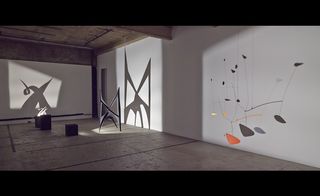
The novel display was inspired by archival images of Calder installing his sculptures in darkness and photographing them using directed light. The images caught the eye of the gallery's founder, Adam Lindemann, who decided to reorientate Calder's familiar aesthetic
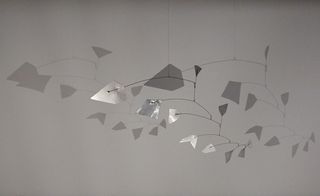
'I wanted to somehow evoke Calder as I see him,' says Lindemann. 'I wanted to get in touch with the emotional way that I see these pieces move and stand still'

In the darkened gallery, even stationary works like 'Monsieur Loyal (Ringmaster)', 1967, pictured here, and 'Red Curlicue', 1973 have a larger-than-life presence. Both are maquettes, which reveal a little about how Calder sought to resolve scale issues when he designed his monumental stabiles
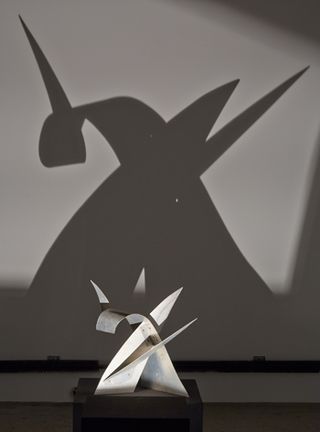
'Red Curlicue' [maquette], 1973
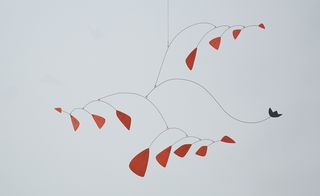
'Little Black Flower', 1944. This privately held piece has not been exhibited since the 1940s
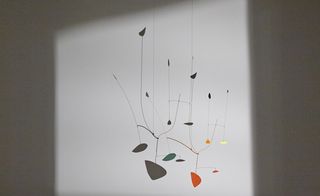
The works featured range in date from 1929 to 1974, with this piece called 'Untitled', from 1939
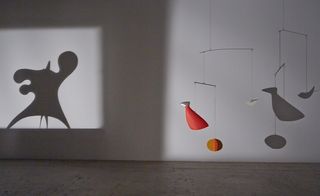
Backed by an instrumental soundtrack, 'Calder Shadows' embodies the qualities of abstraction and experimentation that the artist became known for
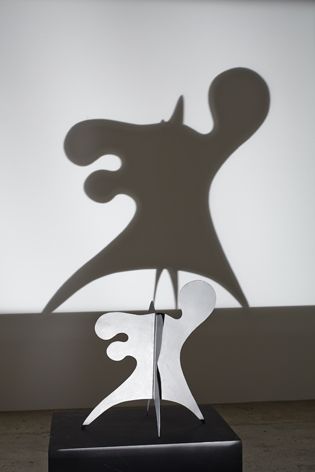
'Ex-Octopus', 1936, is graphically magnified in size on the wall

The shadow of 'Morning Cobweb' [intermediate maquette], 1967, becomes even more menacing with project
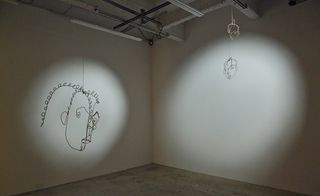
'Untitled', 1929, is constructed of thin metal wires that are transformed into an animated line drawing, which oscillates and turns with the slightest movement of air, highlighting the kinetic aspect of Calder's work
ADDRESS
Venus Over Manhattan
980 Madison Avenue
New York
Wallpaper* Newsletter
Receive our daily digest of inspiration, escapism and design stories from around the world direct to your inbox
Pei-Ru Keh is a former US Editor at Wallpaper*. Born and raised in Singapore, she has been a New Yorker since 2013. Pei-Ru held various titles at Wallpaper* between 2007 and 2023. She reports on design, tech, art, architecture, fashion, beauty and lifestyle happenings in the United States, both in print and digitally. Pei-Ru took a key role in championing diversity and representation within Wallpaper's content pillars, actively seeking out stories that reflect a wide range of perspectives. She lives in Brooklyn with her husband and two children, and is currently learning how to drive.
-
 A new book offers a cinematic view on Molteni & C
A new book offers a cinematic view on Molteni & C‘Molteni Mondo. An Italian Design Story’ published by Rizzoli celebrates 90 years of the Italian furniture company Molteni & C
By Rosa Bertoli Published
-
 Ikea introduces its first gaming furniture collection
Ikea introduces its first gaming furniture collectionBrännboll is the first Ikea gaming furniture collection, unveiled during Milan Design Week 2024 and designed to swiftly transform a domestic space into a gamer’s paradise
By Jasper Spires Published
-
 Morgan take their classic roadster and give it subtle but significant tweaks for 2024
Morgan take their classic roadster and give it subtle but significant tweaks for 2024New details and features give the compulsive Morgan Plus Four an even more pared back silhouette and driving ability
By Jonathan Bell Published
-
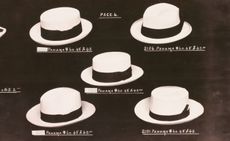 The Met’s ‘The Real Thing: Unpacking Product Photography’ dissects the avant-garde in early advertising
The Met’s ‘The Real Thing: Unpacking Product Photography’ dissects the avant-garde in early advertisingA new exhibition at The Metropolitan Museum of Art in New York explores the role of product photography and advertising in shaping the visual language of modernism
By Zoe Whitfield Published
-
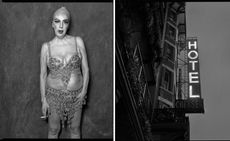 Tony Notarberardino’s Chelsea Hotel Portraits preserve a slice of bygone New York life
Tony Notarberardino’s Chelsea Hotel Portraits preserve a slice of bygone New York life‘Tony Notarberardino: Chelsea Hotel Portraits, 1994-2010’, on show at New York’s ACA Galleries, is the photographer’s ode to the storied hotel he calls home and its eclectic clientele
By Hannah Silver Published
-
 ‘LA Gun Club’: artist Jane Hilton on who’s shooting who
‘LA Gun Club’: artist Jane Hilton on who’s shooting who‘LA Gun Club’, an exhibition by Jane Hilton at New York’s Palo Gallery, explores American gun culture through a study of targets and shooters
By Hannah Silver Published
-
 Detroit Institute of Arts celebrates Black cinema
Detroit Institute of Arts celebrates Black cinema‘Regeneration: Black Cinema 1898-1971’ at the Detroit Institute of Arts (DIA) brings lost or forgotten films, filmmakers and performers to a contemporary audience
By Anne Soward Published
-
 BLUM marks 30 years of Japanese contemporary art in America
BLUM marks 30 years of Japanese contemporary art in AmericaBLUM will take ‘Thirty Years: Written with a Splash of Blood’ to its New York space in September 2024, continuing its celebration of Japanese contemporary art in America
By Timothy Anscombe-Bell Published
-
 Todd Gray’s sculptural photography collages defy dimension, linearity and narrative
Todd Gray’s sculptural photography collages defy dimension, linearity and narrativeIn Todd Gray’s New York exhibition, he revisits his 40-year archive, fragmented into elaborated frames that open doors for new readings
By Osman Can Yerebakan Published
-
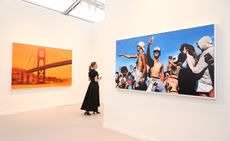 Frieze LA 2024 guide: the art, gossip and buzz
Frieze LA 2024 guide: the art, gossip and buzzOur Frieze LA 2024 guide includes everything you need to know and see in and around the fair
By Renée Reizman Published
-
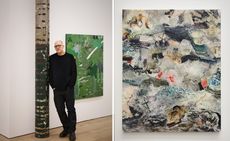 New York artist Christopher Astley showcases an alternative natural world
New York artist Christopher Astley showcases an alternative natural worldAt Martos Gallery in New York, Christopher Astley’s paintings evoke an alternative natural world and the chaos of warfare (until 16 March 2024)
By Tianna Williams Published